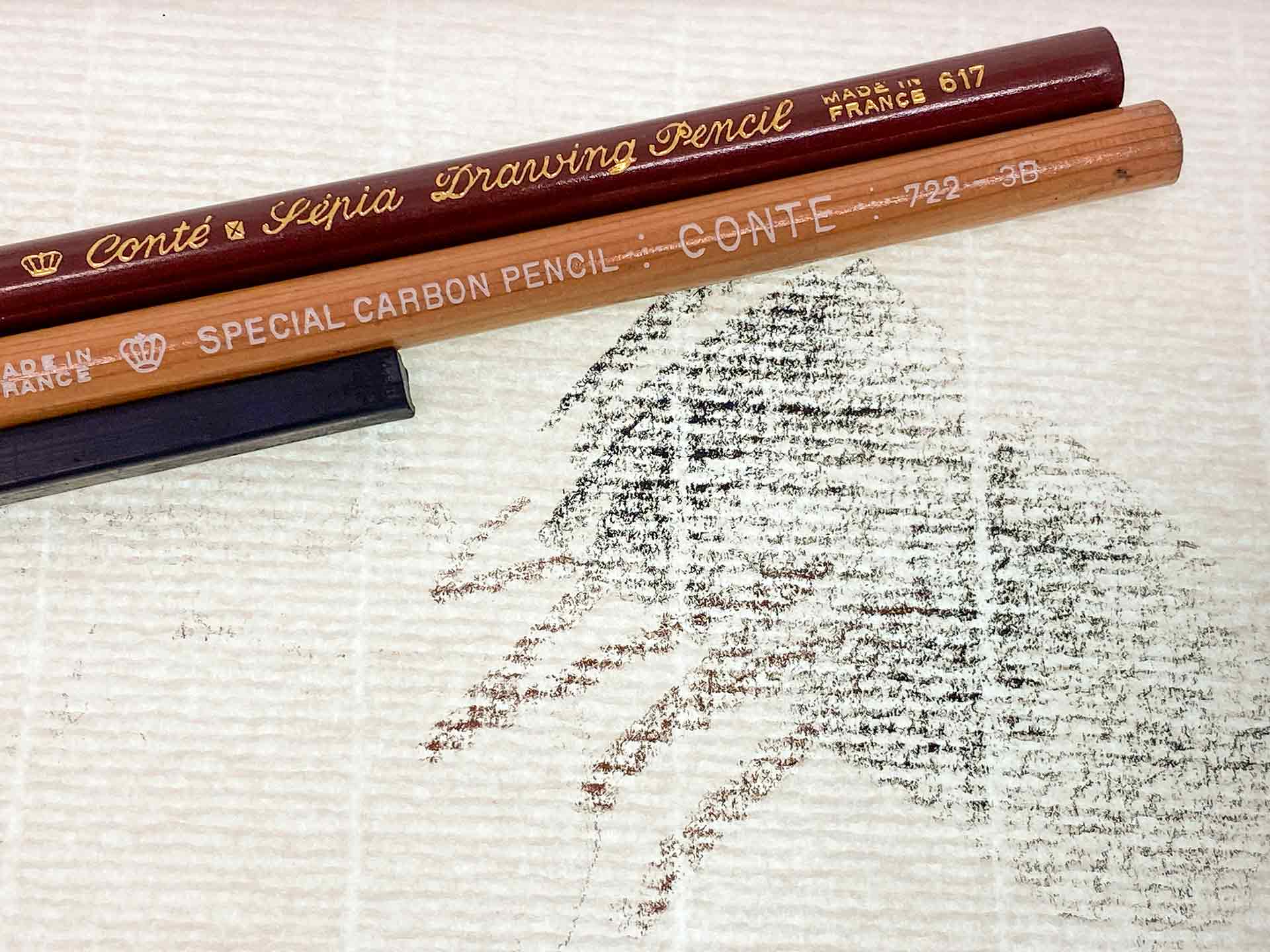
Georges Seurat (b. 1859, Paris; d. 1891, Paris) is known mainly for his colorful pointillist paintings, but the innovative treatment of light that characterizes his work is already found in the early black and white drawings he made in Paris.
The method of painting created by Seurat himself, chromoluminarism or divisionism, consisted of the arrangement of luminous dots of color on the surface, juxtaposing complementary tones so that the chromatic fusion would take place in the viewer’s retina. Seurat used the theories of authors like Charles Blanc, Michel-Eugène Chevreul, and Ogden Rood both for the development of this method and for the systematic study through drawing of the effect of light and shadow.
Because he was so rigorous in his research, contemporaries like Paul Signac used to call Seurat “the notary.” Contemporary Op artist Bridget Riley, an enthusiastic admirer of the work of the divisionist painter, also described his gaze as one “of rigorous scrutiny.”
TEXTURE AND GESTURE
An understanding of the characteristics of Georges Seurat’s drawing tools is of great assistance in interpreting his works. He drew with a Conté stick on Michallet paper. By combining the qualities of the two materials, a kind of fusion is produced between figure and background.
Michallet
Michallet was a high-quality laid paper with a special texture created by a web of vertical and horizontal lines. It was made by hand, sheet by sheet. In this manufacturing process, the pulp is dissolved in water in a vat and then sieved through a rectangular paper mould spanned by thin metal rods, which are joined together with wire. These create the laid pattern. The watermark which identifies the different manufacturers is sewn into these rods with metal thread. The pulp is then spread on felt or coarse wool and pressed to extract the excess water, and the sheets are left to dry.
Michallet paper was produced in a single size (63 x 48 cm). Seurat divided each sheet into four parts so that the pattern would be more visible owing to its increased proportion of the smaller paper size. When he applied the conté crayon, the texture of the surface fragmented the stroke and generated a visual vibration.
Conté
The Conté crayon, patented by Nicolas-Jacques Conté in 1795, combines pulverized graphite with a base of wax or clay, and its consistency allows purer blacks to be obtained than with charcoal. Conté is produced in pencils or sticks. Seurat used both. The artist chose one or the other depending on the gesture he wanted to convey in order to obtain different densities. Applying more pressure enabled him to create dark areas, while he kept parts of the paper free to configure expanses of light.
